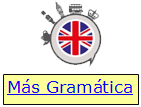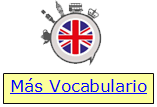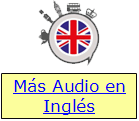|
Chemistry vocabulary
Maria – I’m (a) chemistry teacher – use ‘a’ or ‘an’ with professions in
the singular
Alex – different aspects of (XtheX) life – no article when you talk
about life in general.
Chemistry Vocabulary – Pronunciation of ‘chemistry’ /kemistry/ – chemist,
pharmacy, drug store (US) In the UK, the pharmacy is often inside the
chemist’s (the person is the chemist or pharmacist).
Boiling Point – The point in temperature when the liquid starts to boil.
Water boils at 100 degrees (= grados) C or 212 degrees F (Fahrenheit) at
1 atmosphere of pressure (sea level), but water boils at a lower
temperature as you gain altitude (e.g., on a mountain) and boils at a
higher temperature if you increase atmospheric pressure.
Absolute zero – The lowest temperature theoretically possible, when the
movement of particles would be minimal. It is zero on the Kelvin scale,
equivalent to -273.15°C.
Heat of Vaporization – Amount of energy required for a liquid to become
a gas.
Khan Academy Chemistry
Atom – smallest particle of matter.
Nucleus – The center of an atom.
Protons – Particles in an atom with a positive charge.
Neutrons – Particles in an atom with no charge.
Electrons – Particles in an atom with a negative charge.
Quarks – Smaller particles in neutrons and protons.
Metallic Bonding – Positively charged metallic ions surrounded by an
electron cloud.
Chain reaction – a chemical reaction in which one action leads to
another which leads to another and so on and so forth.
Atomic number – The number of protons in the nucleus of an atom, which
is characteristic of a chemical element and determines its place in the
periodic table.
The Periodic Table of the Elements (from Wikipedia)
The periodic table is a tabular arrangement of the chemical elements,
ordered by their atomic number (number of protons), electron
configurations, and recurring chemical properties.
This ordering shows periodic trends, such as elements with similar
behaviour in the same column.
It also shows four rectangular blocks with some approximately similar
chemical properties.
In general, within one row (period) the elements are metals on the left,
and non-metals on the right.
The rows of the table are called periods; the columns are called groups.
Six groups have names as well as numbers: for example, group 17 elements
are the halogens; and group 18, the noble gases.
The periodic table can be used to derive relationships between the
properties of the elements, and predict the properties of new elements
yet to be discovered or synthesized.
The periodic table provides a useful framework for analyzing chemical
behaviour, and is widely used in chemistry and other sciences.
How many elements are there in the periodic table? – As of 2016, the
periodic table has 118 confirmed elements, from element 1 (hydrogen) to
118 (oganesson). Elements 113, 115, 117 and 118 were officially
confirmed by the International Union of Pure and Applied Chemistry (IUPAC)
in December 2015.
Idioms
a chemical imbalance – A euphemistic (and possibly derogatory)
insinuation of a mental illness or disorder. “I think I might have a
chemical imbalance or something, I’ve just not been myself lately.”
“What’s wrong with you, do you have some kind of chemical imbalance or
something?”
to be in your element
chemical attraction – there’s chemistry between us
For every action there is an equal and opposite reaction
blinded with science
 *Dispones
de más
PODCAST en inglés publicados en los cuadernos anteriores *Dispones
de más
PODCAST en inglés publicados en los cuadernos anteriores
a los que puedes acceder directamente así como al índice de su
contenido. |
|
|
